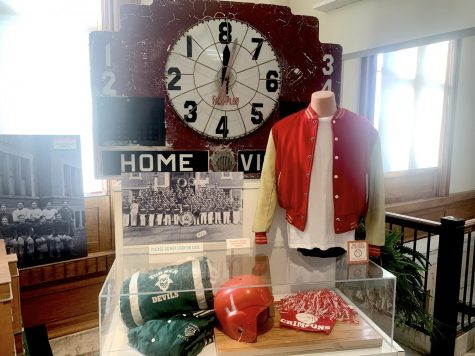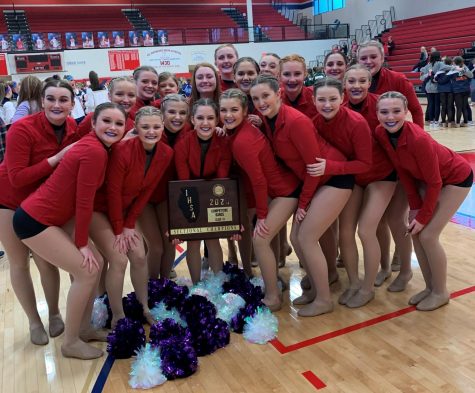Guitar Hero Live: Revival of a dead genre (Part 1)
November 3, 2015
On October 20, Activision released the newest edition of the longtime popular Guitar Hero franchise, named Guitar Hero Live. After a five year hiatus after Guitar Hero: Legends of Rock, this seventh installment of the series departs from the normal Guitar Hero formula and instead develops a new, simpler but still intuitive gameplay mechanic.
Veteran players of the rhythm-based gameplay of Guitar Hero know that in order to play the game, one would need a specially designed guitar controller, normally based off of real life guitars. The original controller featured five colored frets that players had to press as well as a small strumming switch the player must press at the same time to the music in order to simulate playing a guitar. Guitar Hero Live threw out the old guitar and brought in one that looked very simple in appearance but in gameplay becomes something much more.
The new controller features six buttons, three white and three black, which sit across from each other on the neck of the guitar. In the original game, each colored fret had its own place on the “highway” or the treadmill that brings each of the notes that player must play. In Guitar Hero Live, the highway only brings black and white notes. The player must now press the fret that corresponds with the note’s position on the highway. For instance, if a black note comes down the right side of the highway, the player would need to press the right black fret and the strum switch in order for the note to count. In addition, players may also see notes that are half black and half white. In response, players must press both the black and white corresponding frets with the strum switch for the note to count. This new way of playing may take a while for experienced players to get a handle on, but it becomes simpler the more one practices. I, for one, was just fumbling around the frets the first few times I played.
Along with the new control scheme comes new game modes. Most notably, GH Live. Unlike past iterations where the player plays a famous rock song with an animated band, GH Live incorporates live footage of a fictional band playing songs through the eyes of the player. Essentially, the game focuses more on an immersive gameplay experience focusing on transforming the average player into a professional rock star. Just like the original games, the simulated audience, which in this game is live footage of a simulated audience, will begin to cheer or boo the player based on how well the player does. Bandmates also act as progress meters, jamming out with the player whenever they hit a long streak of notes or giving worrying looks when the player freaks out and fumbles. It’s definitely a strange experience at first, but the immersive attitude of the game begins to set in within a few songs.
Also added is Guitar Hero TV which gives the player an opportunity to rock out to famous songs via their music videos. The overall best part about this mode is the fact that the player doesn’t even have to play the game to enjoy this mode. The music continuously plays throughout the entire mode and serves as a practice mode if anything. However, this is where Guitar Hero Live begins to delve into micro transactions. For those unfamiliar with micro transactions, they are basically small amounts of money one must pay if they want to get the most content out of a game, even after buying the game at full price. This is a common method in mobile gaming that for some reason, has leeched its way into console and computer gaming. In Guitar Hero Live, if one wants to play songs in Guitar Hero TV, he or she would have to purchase “plays” by using in-game currency or real life money. In-game currency is easy to obtain by just playing the game. But, if one wants to see the full line of songs, one must purchase a pass with real money that allows them access for a limited time.
In conclusion, Guitar Hero Live is the remodeling of a game that really didn’t need remodeling. The new gameplay might be jarring to some, but the new assets serve as a nice change of pace. In all honesty, I prefer the older titles to this game, but this game is still worth a play just to see what all of the fuss is all about. For some reason, rhythm-based games are trying to make a comeback this year with this game and another well-known franchise’s sequel. Only time will tell if they will truly be as big as they once were.
Guitar Hero Live is available on the PS4, PS3, Xbox 360, Xbox One, and the Wii U. There is also a mobile version of the game for iOS. All in all, the game is a fun revival of a dead genre, but the micro transactions and the strange gameplay stinks more of gimmicky overtones and less of a new way to enjoy a beloved classic.






